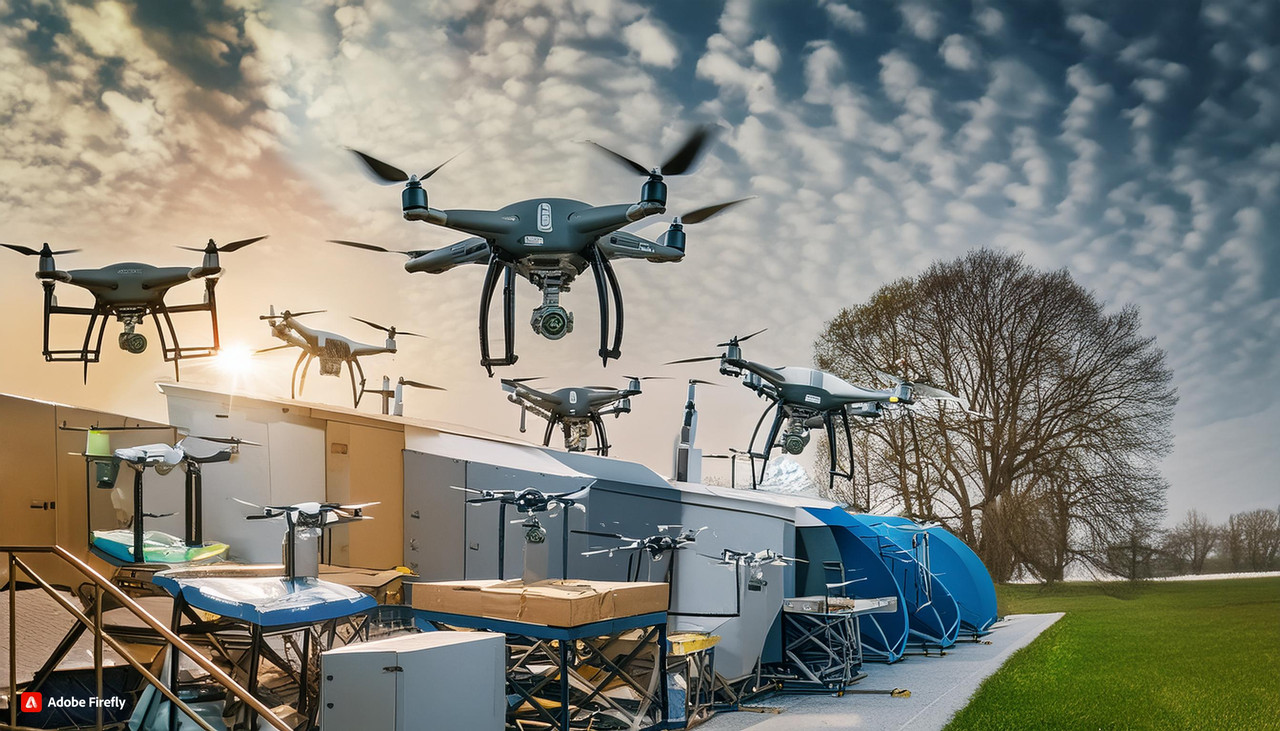
Is It Legal To Fly a Drone Over Private Property in India?

Flying a drone is indeed an interesting prospect, to say the least. However, a question that arises in people's minds is whether it is possible to fly a drone over private property in India. The answer to this question is no; you cannot fly a drone over private property without obtaining prior permission from the property owner. This distinction applies particularly to government agencies operating drones over private property, as opposed to those used for commercial purposes.
The regulatory authority, the DGCA, has established rules for drone operations in India, and all drone operators are required to comply with these regulations.

Why is the Use of Drones Increasing?
Not so long ago, the thought of drones flying in the air was just considered imagination, but the power of science has turned that imagination into a reality. The primary reason behind the increasing popularity of drones in India is the widespread adoption of these devices by various industries. These industries include agriculture, photography and videography, mapping and surveying, cinema and much more.
The use of drones is expected to increase over time due to the benefits they provide to various industries. Regarding the benefits, the use of drones can save a significant amount of time and manpower in completing tasks, and also increase speed and efficiency when done with their assistance. With regular advancements in the field of drone technology, drones are only getting better and better, and soon we will see more and more drones in the air for various purposes.

Types of Drones
There are different types of drones categorized according to the DGCA's regulations, based on weight and the registration mandate.

Nano Drones
As the name suggests, they are the smallest and lightest members of the drone family. Generally, the weight of a nano drone is below 250 grams and it cannot fly beyond a height of 50 feet. There is no need to get a Nano drone registered for operation, and it can also be flown without having a drone pilot licence.

Micro Drones
These are larger and heavier than their nano counterparts, with weights ranging from 250 grams to 2 kilograms. The flying rules associated with these drones stipulate that they should not be flown beyond an altitude of 250 feet and should not be flown over inhabited areas. Regarding the registration mandate, online registration is mandatory for those who wish to fly micro drones.

Small Drones
When discussing the use of drones for commercial purposes, it typically begins with small drones. The weight of these drones is between 2 kilograms to 25 kilograms. Generally, these drones are used for photography and videography purposes. These category drones are permitted to fly at an altitude of no more than 400 feet while in VLOS with Airspace permission for the controlled airspace. It is mandatory to have a UIN, or unique identification number, and register these drones. Flying them, without abiding by these rules can lead to penalization and even the seizure of the drone by the authorities.

Medium Drones
With medium drones, we start looking at the daddy drones. These drones are often flown primarily for commercial purposes. When we say the word “daddy drones”, we mean it. They are the daddy in terms of total weight, altitude at which they can fly, and payload capacity. The weight of these drones can range from 25 kg to 150 kg, and specific pilot licenses are required for each flight. It is not just the registration, which is mandatory for flying these drones, but special permissions from the authorities and residents are also required for their operation.

Large Drones
These drones can be rightly termed as the big daddy of the drone industry. Any drone that weighs more than 150 kilograms falls under the category of large drones. A drone pilot who is to fly a large drone should possess all the required licenses and all the permissions from the authorities and residents for flying these drones over their property. It is also essential to consult the latest DGCA guidelines before taking a flight. Drone taxis can also be classified as large drones and are revolutionizing transportation on a significant scale.

Drone Flying Rules in India
• Keep the drone within the Visual Line of Sight (VLOS) range without assistance, ensuring control and situational awareness are maintained.
• Drones should only be flown during the day unless cleared for night flying.
• Drones are not permitted to fly within 5 miles of airports, military installations, government buildings, or any other restricted airspace.
• Use the Digital Sky to identify no-fly zones when operating drones, preventing accidents and ensuring compliance with privacy regulations.
• The use of drones to intrude on privacy is illegal. If a drone is flown without permission over private property, it can be considered a violation of privacy and can be reported.
• Fly drones in noise-sensitive areas only when necessary and consider avoiding them altogether.
• Any drone weighing 250 grams or more must be registered online with the DGCA and obtain a Unique Identification Number (UIN) before flying it commercially in India.
• Registration on the Digital Sky platform is required for all categories, from small to large, that are required to fly in controlled airspace near an airport or commercially.
• To fly in controlled airspace or participate in commercial flying activities, permission from the DGCA may be required.
• Although not obligatory for all classes of drones, drone insurance is recommended in the event of any damage occurring to either your property or that of third parties.
• An RPC is mandatory for commercial drone operations, as per the DGCA.

Safety Guidelines for Flying Drones in India
• Before flying, inspect the drone for damage or malfunctions.
• Drones should not be flown in strong winds, heavy rainfall, or poor visibility.
• The consumption of liquor or drugs while operating a drone should also be strictly forbidden.
• Be cautious when flying your drone in areas where privacy can be compromised, such as private property.

Penalty for Illegal Drone Flying in India
• Financial Punishment can be imposed on a drone operator for flying drones without authorization, entering no-fly zones, or even endangering people or property.
• The drones can be seized if operated illegally.
• Severe legal action may also be taken in scenarios necessitating legal action against drone operators.
• Flouting the regulation is a strong ground for withdrawing or invalidating an RPC.
A Concrete Closure
Therefore, it is understood that a drone cannot be flown over private property without the owner's permission. And, another thing, for flying drones for commercial purposes, there is a need to have an RPC or remote pilot certification. For this, you can always come to us at Flapone Aviation, one of the finest drone piloting institutes in Delhi-NCR, catering to both male and female drone enthusiasts in India.
Related Blog
Latest updates and insights from Flapone Aviation.

What Types of Drones Are Present in the Market?
October 8, 2024

How to Become a Pilot After 12th in India?
February 7, 2025

What are the Basics of Drone Piloting?
February 7, 2025




Author Bio
A dynamic and seasoned content writer with 6 years of experience curating content for different platforms. With the knowledge of all the cogs of content writing and SEO, he has served in various industries. He believes that content is the kingpin, and if penned well, it has a lasting impact on the minds of the readers. Apart from content creation, he is also an ardent poetry lover and performer. He has two publications of his poetry collection, namely Alfaaz and Chestha